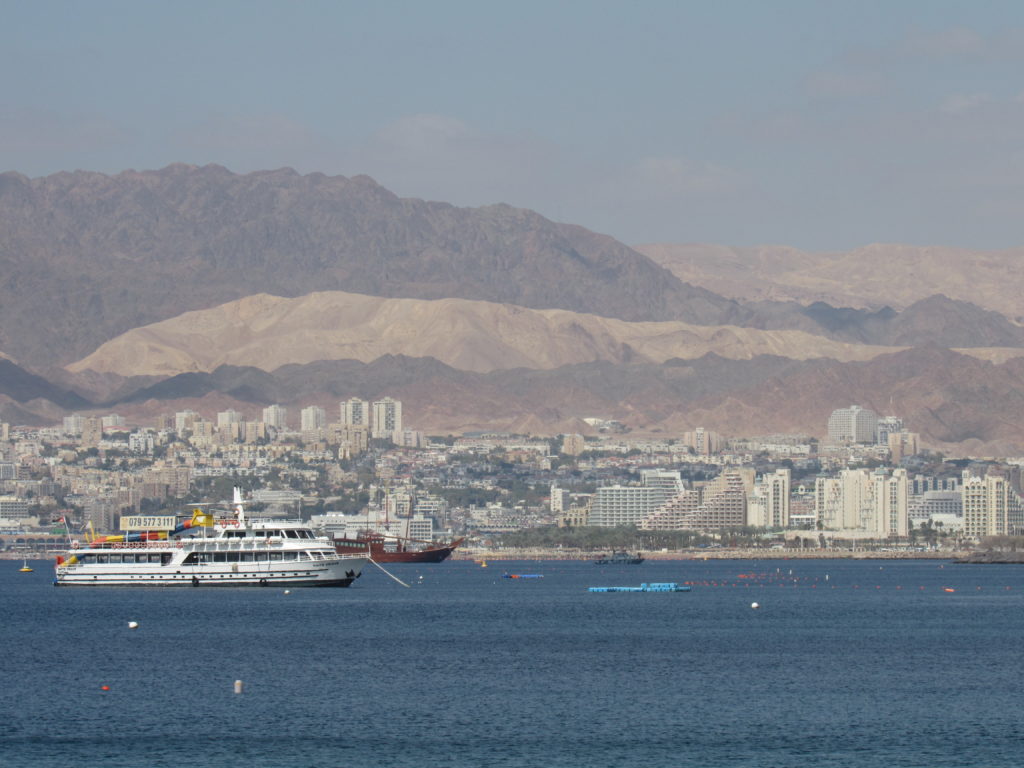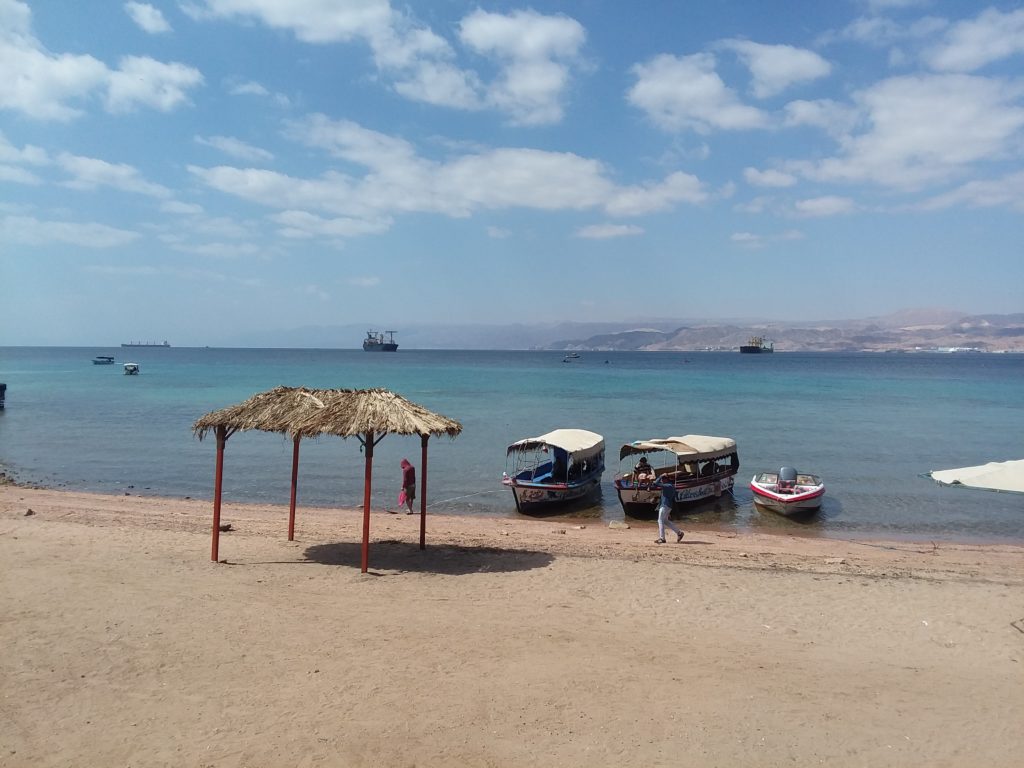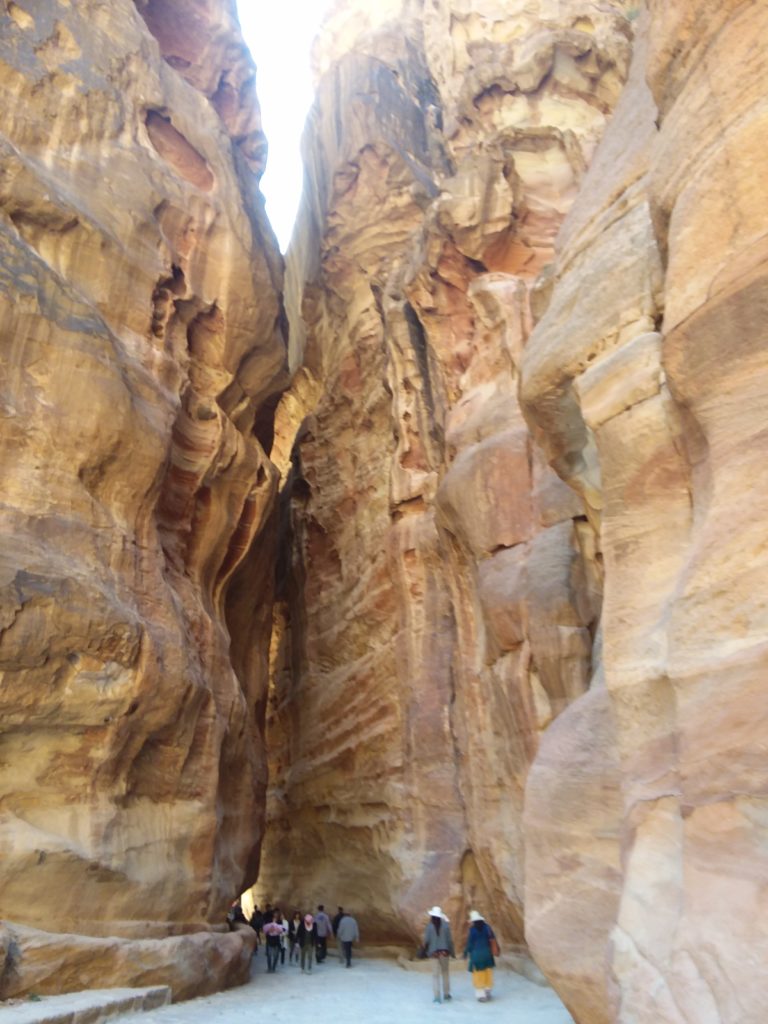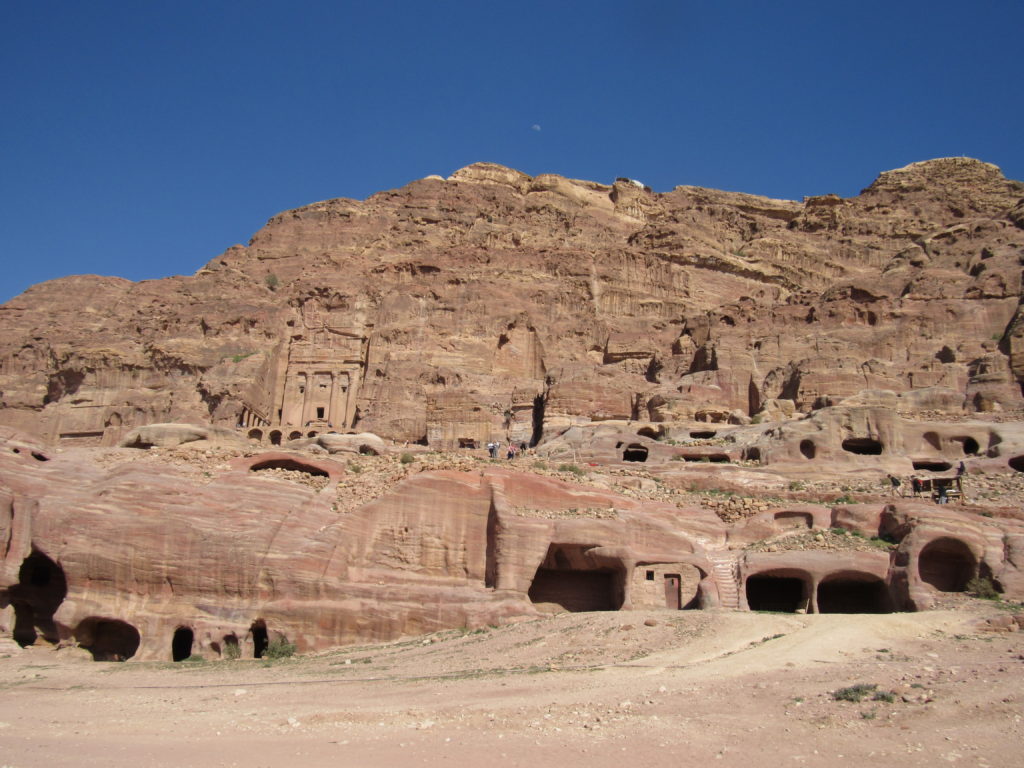I will be leaving Haifa in August this year and returning to the UK. After three years living in Israel, and being in no particular rush to do and see everything, we suddenly realized that if there was anything we still wanted to see or do, then we had better get on with it. There remain a bunch of museums in Jerusalem I’d still like to visit, but there was one major thing we had conspicuously failed to do: visit the ancient city of Petra in neighboring Jordan.

Due to its appearance at the climax of Indiana Jones and the Last Crusade, the treasury building is Petra’s most iconic sight . The entire ediface is cut out of the rock face and is as impressive in reality as it appears on film. Despite the name, the building is not a treasury — in fact it is believed to have been a mausoleum for the Nabatean King Aretas IV. The name derives from the Arabic name Al Khazneh which is rooted in folk tales of treasures hidden inside.
But before we could admire the Treasury Building, we actually had to get to Petra. Due to relatively healthy relations between the Kingdom of Jordan and Israel, it is possible to cross the border between the two countries, albeit at one of a handful of crossing points. Most tourists book with a tour group, but it is entirely possible to go solo, so we opted to plan our own adventure. This meant an early start in Haifa to catch one of the sporadically scheduled buses that run from Nazareth into Amman, the capital of Jordan.
Amman is far less tourism oriented than Petra (or Aqaba where we would exit Jordan after visiting Petra), but it was worth visiting just to see the huge Roman amphitheater which dominates the downtown area.

Although I do not have any similar photographs to document the experience, eating the local kanafeh in Amman was a similarly worthwhile experience. In case you don’t know what kanafeh is, allow me to explain. Imagine a cheese cake. Now make that cheesecake thinner and serve it hot and upside down. And instead of shortcrust pastry you have a base (now a lid since you turned it upside down) of shredded filo pastry with pistachio nuts sprinkled over it. And the cheese is a local Palestinian variety — a cross between something like mozzarella and ricotta. It is served with hot, sweet, sugary rosewater is poured over it. Kanafeh is a killer desert. Even as I type this I’m grieving the fact that I haven’t eaten more of it. I may have to try making some after I have left. I won’t be the first person to have tried, as this youtube video I stumbled over bears witness:
From Amman it was another early start and long bus journey to arrive at Petra where we were disgorged from our bus into the throng of tourists. Tourism is a major part of the Jordanian economy and Petra is a central to that. But until 1812 the capital of the Nabataean Kingdom, once a major regional trade center, was essentially lost to the world, the location a secret known only to Bedouin tribesmen intent on preventing the remains of the city from being plundered.
Johann Ludwig Burckhardt, was born in 1817 to a Swiss family of merchants. After studying Arabic at Cambridge, and was tasked by the African Association with finding the source of the Niger River, but instead decided to improve his Arabic first by traveling around the Middle East. Soon he was adopting the persona of Sheikh Ibrahim ibn Abdallah an Indian Muslim whose strange accent could easily be explained away so long as he wasn’t actually in India. After hearing talk of what he realized must be the ruins of a city known to classicists only through passages of ancient text, he convinced a Bedouin to guide him there on the pretense of completing a pilgrimage.
I hired a guide at Eldjy, to conduct me to Harouns tomb, and paid him with a pair of old horse-shoes. He carried the goat, and gave me a skin of water to carry, as he knew that there was no water in the Wady below.
In following the rivulet of Eldjy westwards the valley soon narrows again; and it is here that the antiquities of Wady Mousa begin. Of these I regret that I am not able to give a very complete account: but I knew well the character of the people around me; I was without protection in the midst of a desert where no traveller had ever before been seen; and a close examination of these works of the infidels, as they are called, would have excited suspicions that I was a magician in search of treasures; I should at least have been detained and prevented from prosecuting my journey to Egypt, and in all probability should have been stripped of the little money which I possessed, and what was infinitely more valuable to me, of my journal book. Future travellers may visit the spot under the protection of an armed force; the inhabitants will become more accustomed to the researches of strangers; and the antiquities of Wady Mousa will then be found to rank amongst the most curious remains of ancient art.
Travels in Syria and the Holy Land, by John Burckhardt
At the time you could easily imagine Burckhardt fancying himself a brave and impetuous explorer. I think most of us today would, at the very least, would consider betraying the trust of your guide a major ethical lapse. Not that Burckhardt had long to reflect on the choices he made. He died five years later of dysentery.
Visiting Petra today is hazard free, to an extent Burckhardt himself could have imagined. There is still some legwork involved, however. Walking through the entire site is a good 8K hike. But it is an amazing 8K. You start by wandering through the outer limits of the city where you can still see graves cut into the rock face of the sounding valley. Then you hike through the Siq — a norrow passage between two rockfaces that legend tells was originally formed by the water that gushed from the stone that Moses struck with his staff. Eventually you arrive at the Treasury building, and then into the valley where you find the rest of the city.
The length of the hike combined with the heat seemed to take plenty of visitors by surprise. There is a brisk trade in camel, horse, and donkey rides to take the overwhelmed back and forth. You can be forgiven for not anticipating how much there is to see (there is an entire city) if all you were expecting was the Treasury Building. There is a huge amphitheater, temple, and — if you are ready to go to the site’s furthest extent — the impressive Monastery which easily matches the Treasury for grandeur:


Finally, after spending 24 hours in Petra we took a taxi down to Aqaba where we were able to enjoy more kanafe before leaving Jordan and crossing into Eilat the next morning.





